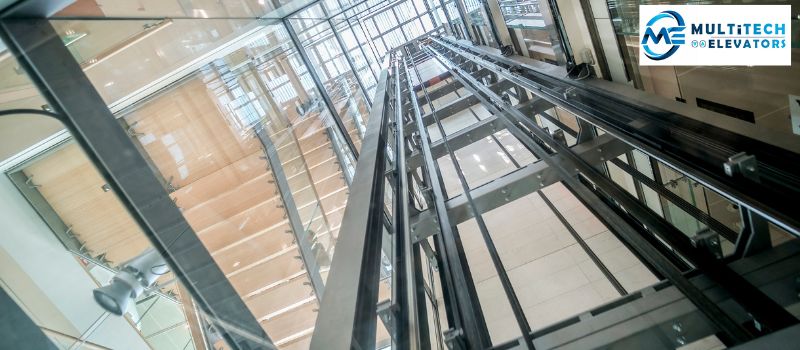Handicap elevators, also known as residential elevators or home lifts, have become an essential feature in modern homes, especially for individuals with mobility challenges. As the global population ages and the prevalence of disabilities rises, the demand for accessible living spaces has never been higher. This trend highlights the importance of handicap elevators in enhancing the quality of life for people with disabilities and their families. This article will explore the various benefits of installing handicap elevators in homes, the different types available, and the factors to consider when making such an investment.
Enhancing Accessibility and Independence
One of the primary benefits of installing a handicap elevator in a home is the significant improvement in accessibility. For individuals with mobility issues, navigating stairs can be challenging and dangerous. Handicap elevators eliminate this obstacle, allowing users to move between floors effortlessly and safely. This increased accessibility extends beyond the individual to include family members, caregivers, and visitors who may also benefit from the convenience of an elevator.
Moreover, handicap elevators promote independence. Individuals who might otherwise rely on assistance to navigate stairs can regain their autonomy, moving around their home freely and confidently. This independence can lead to improved mental health, as the ability to perform daily tasks without help can significantly boost self-esteem and overall well-being.
Safety and Convenience
Safety is a critical concern for individuals with mobility issues. Falls are a leading cause of injury among the elderly and those with disabilities, and stairs are a common hazard. Handicap elevators mitigate this risk by providing a safe and reliable means of moving between floors. Modern elevators come equipped with various safety features, such as emergency stop buttons, backup power systems, and smooth, controlled movements, ensuring users’ safety even in the event of a power outage or malfunction.
In addition to safety, convenience is another significant advantage of handicap elevators. Carrying heavy items, such as groceries or laundry, up and down stairs can be strenuous and risky for individuals with limited mobility. An elevator simplifies these tasks, allowing for easy transportation of items between floors. This convenience extends to family members and caregivers, who can also benefit from the reduced physical strain and increased efficiency.
Increasing Property Value
Installing a handicap elevator can also enhance a home’s value. As the population ages, the demand for accessible homes is increasing. Potential buyers may see a home with an elevator as a more attractive option, especially if they have elderly family members or anticipate future mobility challenges. A handicap elevator can be a unique selling point, setting the property apart from others on the market and potentially leading to a higher resale value.
Types of Handicap Elevators
There are several types of handicap elevators available, each with its own set of features and benefits. The most common types include:
- Hydraulic Elevators: These elevators use a hydraulic system to lift and lower the cab. They are known for their smooth and quiet operation and can be installed in homes with multiple floors. Hydraulic elevators require a machine room for the pump and motor, which can take up additional space.
- Pneumatic Elevators: Also known as vacuum elevators, these use air pressure to move the cab between floors. They are compact, energy-efficient, and do not require a machine room, making them suitable for homes with limited space. However, they are typically best suited for homes with fewer floors.
- Traction Elevators: These elevators use a counterweight and motor to move the cab along a track. They are efficient and can be installed in homes with multiple floors. Traction elevators can be more expensive than other types due to their complex installation requirements.
- Platform Lifts: These are simpler and more cost-effective than traditional elevators. Platform lifts are ideal for homes with only a few steps or for wheelchair users who need to navigate short vertical distances. They can be installed indoors or outdoors and do not require extensive modifications to the home.
Considerations for Installing a Handicap Elevator
When considering the installation of a handicap elevator, several factors should be taken into account to ensure the best fit for the user and the home:
- Space: Assess the available space in the home to determine the most suitable type of elevator. Some elevators, such as pneumatic elevators, require less space and can be installed more easily in smaller homes.
- Budget: The cost of installing a handicap elevator can vary widely depending on the type, features, and complexity of the installation. It’s essential to establish a budget and explore financing options, such as grants, loans, or insurance coverage, to make the investment more affordable.
- User Needs: Consider the specific needs of the user, including their mobility level, the type of wheelchair or mobility aid they use, and any additional features that may be necessary for their comfort and safety.
- Maintenance: Regular maintenance is crucial to ensure the safe and efficient operation of the elevator. Choose a reputable manufacturer and installer who can provide ongoing support and maintenance services.
- Aesthetics: Modern handicap elevators come in various styles and finishes, allowing homeowners to choose an option that complements their home’s interior design. Customizable features, such as lighting, flooring, and wall finishes, can help the elevator blend seamlessly with the home’s décor.
- Building Codes and Regulations: Ensure that the installation complies with local building codes and regulations. Working with a professional installer familiar with these requirements can help avoid potential issues and ensure a smooth installation process.
Conclusion
In conclusion, handicap elevators are a vital addition to homes for individuals with mobility challenges. They enhance accessibility, promote independence, improve safety, and offer significant convenience. Additionally, installing a handicap elevator can increase a home’s value and appeal to potential buyers. With various types of elevators available, homeowners can find an option that fits their needs, budget, and space requirements. Learn more
